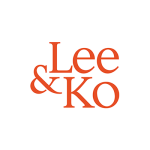Jongsoo Yoon and Gidon Nam from Lee & Ko look at the evolution of cryptoassets in Korea and future prospects for asset-backed tokenisation
Blockchain-based cryptoassets are a type of "digital token", a term that refers to a piece of unduplicated data which plays a specific role in a software system. In a blockchain system, it is possible to create digital tokens as in previous information systems because a blockchain system creates a structure that prevents double-spending without having or needing a centralised institution. A digital token does not have an inherent attribute in itself as it functions like a vessel that can contain other things. Therefore, a digital token can perform the role of a neutral exchange medium like a currency, in which case it is usually called a payment token. However, it can also play a different role by containing a certain value or an asset, depending on how it is programmed.
The evolution of payment and utility tokens
Bitcoin, which marked the advent of full-scale cryptoassets, focuses on the "currency function" as a medium of exchange. However, drastic fluctuations in Bitcoin's market price according to investors' expectations, changes in regulatory environments and market conditions, among other factors, have led to questions over the role of Bitcoin as a payment and settlement medium.
Many of the cryptoassets that followed Bitcoin can be categorised as utility tokens, which are designated to be used in connection with specific services. Through ICOs, many kinds of utility tokens have been issued and sold. Investors bought these tokens expecting their value to increase as the services associated with them expanded and grew in value. However, as they came to realise, the results of the projects related to the utility tokens did not turn out as expected. There is a growing scepticism regarding cryptoassets in general, and this is attributed to the intrinsic limitations of cryptoassets, such as their lack of intrinsic value, the absence of objective price measuring standards, lack of transparency in the ICO process and a series of recent ICO scams. Also, the fact that most of these projects are in fierce competition with pre-existing services and the difficulty in creating an eco-system for cryptoassets by achieving a network effect in a short period of time are additional reasons why there has not yet been a prominent cryptoasset success story up to date.
Recently, due to the introduction of stablecoin (a cryptoasset whose price remains stable), cryptoassets are regaining attention as a means of payment and settlement. Stablecoins can be categorised as: (1) fiat-collateralised stablecoin, such as USDT or UTSD; (2) crypto-collateralised stablecoin, such as Dai; and (3) non-collateralised stablecoin, such as Basis or Terra. Recently in Korea, KWRb, which is a cryptoasset issued as a loan certificate, has received attention because it is a form of stablecoin which is interlocked with the Korean currency (won) without directly representing a right to the Korean won. While there has not been any authoritative interpretation regarding KWRb by Korean financial authorities or Korean courts, it is important to keep an eye on developments in these various forms of stablecoin, considering their far-reaching implications for cryptoassets as means of payment and settlement and the development of stablecoin-related technology.
Asset-backed tokenisation and security tokens
Meanwhile, in order to overcome pre-existing limitations of cryptoassets, which relate to their lack of intrinsic value, asset-backed tokenisation has emerged as a next generation cryptoasset. With emphasis on cryptoassets' characteristics as a value-preserving asset, asset-backed tokenisation is receiving attention as an alternative replacement asset. Emphasising its advantage in terms of liquidity, efficiency, cost-effectiveness and accessibility over previous replacement assets, there are projects being developed to increase the liquidity of illiquid assets via tokenization.
In Korea, the introduction of recent cryptoasset issuances, such as Prorataart and Art Together, that target art works can be interpreted in the same vein. In these cases, the cryptoassets represent portions of art works, such that the purchasers of the cryptoassets obtain co-ownership of the art works. The art works are stored in exhibits that are reserved for the purchasers. The cryptoassets are freely sold / purchased via exchange platforms, and the seller can obtain trading profits from sale transactions.
It is worth noting that cryptoassets involving a full-scale asset-backed tokenisation would be characterised as a security token. There has been a growing interest regarding tokens the issuance of and transactions involving which are conducted in accordance with the security regulations, in a manner similar to stocks and bonds. In line with such growing interest, the security token offering (STO) has also been receiving more attention recently. Furthermore, cryptocurrency exchanges are seeking to build platforms to enable security exchange and circulation – for instance, Bithumb, a Korean crypto-currency exchange, has partnered with Series One, a US company, in order to run a security type token exchange. It is understood that business models with security tokens have more potential for achieving their business objectives, compared to those using utility tokens. It is questionable, however, whether security tokens will replace stocks and bonds any time soon. Globally, there are very few cases where STOs have been successfully used to collect funds (and none of those is in Korea). Additionally, there are no standards applicable to STOs that are comparable to the ERC20 for ICOs. However, the actual problem lies in regulation; the use of security tokens implies that cryptoassets will actually be subject to securities regulations, specifically under the Financial Investment Services and Capital Markets Act (CMA).
Can security tokens be approved?
Under the CMA, a security means a financial investment instrument with an investment risk (of losing the principal investment amount) with regard to which investors have a right to request reimbursement in cash, other means of payment or more money than they paid at the time they acquired the instrument. Soliciting capital through the issuance of a security, such as shares or debt securities, is subject to the CMA. In order for a security to be publicly offered to more than 50 persons, a registration statement by the issuer in connection with the public offering or sale of the securities must be filed with the Financial Services Commission (FSC). Any person engaging in the business of issuing or underwriting securities or inviting offers or offering and accepting offers for such instruments would have to obtain investment/trade authorisation.
Due to this regulatory environment, in ICO cases issuers try to make sure that the cryptoassets do not contain characteristics of securities. In cases involving the art work tokenisation as mentioned above, the reason why people chose to obtain ownership of movable assets directly, instead of gathering funds, is to avoid being subject to the regulations under the CMA by side-stepping the "investment risk" element of securities. However, even in this case, and depending on the actual business structure, if the persons who bought the tokens are regarded as using them for investment purposes (ie, the intend to earn a profit or avoid loss), the possibility of these tokens falling under the definition of a "security" cannot be ruled out entirely.
Against such a stringent regulatory backdrop, a frequently quoted method to increase the liquidity of the security-type tokens is the tokenisation of unlisted stocks. On July 24 2015, the CMA was amended to introduce the crowdfunding brokerage system. According to the amended CMA, a "crowdfunding broker" is an investment broker engaging in the online brokerage of public offering or sale of debt securities, equity securities and investment contract securities issued by unlisted small and medium enterprises that satisfy certain qualifications. The purpose of this system is to allow start-ups and venture companies to have more flexibility in using their funds by exempting them from some existing financial regulations. In order to vitalise the security-type crowdfunding circulation market, in November 2016 Korea Startup Market (KSM) was launched, and more recently the ceiling for an issuer's offering amount was raised to KRW1.5 billion (approximately $13 million) per year. However, the majority view is that such measures alone cannot resolve the lack of liquidity and will therefore not ignite the security-type crowdfunding market. Opinions have been voiced that if cryptoassets are applied to security-type crowdfunding, it may boost liquidity and result in the vitalisation of the market.
Future outlook
The Korean Government's stance towards cryptoassets continues to be negative. On September 4 2017, at a joint task force meeting of the related agencies, the Government declared that it would prohibit all ICOs which qualify as security issuances. It further announced its policy to prohibit all types of ICOs on September 29 2017. However, the Government has not provided any legal ground or reasoning for its policy, which only added to confusion in the market. The Government's position has led Korean companies to pursue ICOs in other jurisdictions such as Switzerland, Singapore, Hong Kong or Estonia to avoid sanctions, even though they were targeting Korean investors. This has increased costs and complicated the legal process by adding local tax regulations and the potential violation of the Foreign Exchange Transactions Act (FETA). There is also criticism that the Government's position seems to be based on a negative view of cryptoassets themselves and that it is seeking only to impose criminal and administrative sanctions against cryptoassets instead of providing protective measures for users and market participants.
Under these circumstances, it is doubtful whether the regulating authorities will allow security-type token projects, like STOs, and embrace them under the regulatory system any time soon. Nevertheless, it is possible that the Korean Government may change its current position in connection with the implementation of recently legislated laws, such as the Financial Innovation Support Act (FinISA).
The implementation of the FinISA is an important move by the Korean Government to create a regulatory sandbox to spark innovation and growth in the fintech industry. The regulatory sandbox will be formed under the FinISA in conjunction with newly adopted key laws, such as the Information and Communication Technology Convergence Act. The FinISA, which was implemented on April 1 2019, gives fintech companies exemptions from the existing financial services regulations, or suspends the applicability of the regulations for a certain period of time. Under this law, if a fintech company that is regulated by the Korean Commercial Act and has an office in Korea files an application with the FSC to designate a financial or finance-related service that differs in content, method or form from existing services as an "innovative financial service", the Innovative Financial Judging Commission (IFJC), a sub-division of the FSC, will review the application. If the applicant is successfully designated as an innovative financial service by the IFJC, it will not be subject to the existing financial regulations for a maximum of two years (with a one-time extension for two years).
The standard for the IFJC's review is whether: (i) its main target is the Korean financial market; (ii) the service is innovative; (iii) it increases consumers' benefits; (iv) the application of the Special Act would be otherwise unavoidable; (v) the business operator has sufficient capacity to maintain the business; (vi) there are sufficient protection devices to protect financial consumers; (vii) there is a risk of significantly compromising the stability of the financial market and financial order; (viii) and there is a risk of significantly compromising finance related laws' main purposes.
There are both positive and negative views on the prospect of security tokens-related business models, such as STOs, becoming designated as an innovative financial service. However, unless the negative basic trend toward cryptoassets changes tack, it is unlikely that any business relating to cryptoassets will be designated as an innovative financial service.
Recently, the Ministry of Science and ICT reviewed matters related to the ICT Regulatory Sandbox. In January, Moin, a foreign remittance provider, requested an ICT Regulatory Sandbox to register as a cryptocurrency foreign remittance provider. Moin expects that both the commission charge and remittance time could be reduced by combining cryptocurrency wire transfers to its current service. However, the Ministry deferred its decision to have further discussions with other relevant authorities, including the FSC. Apart from the Ministry, prior to the enforcement of the FinISA, the FSC has accepted financial regulatory sandbox applications. While the FSC has not provided clarity on what direction it will take regarding accepting cryptoasset services as innovative financial services, its decisions on other applications may be significant with regards to the future of asset-backed tokenisation in Korea.
About the author |
||

|
|
Jongsoo (Jay) Yoon Partner, Lee & Ko Seoul, Korea T: +82 2 6386 6601 Jongsoo (Jay) Yoon is a partner at Lee & Ko. His main practice areas include intellectual property rights, protection of personal information, internet, media content, broadcasting, information and communications. Jay is the head of the blockchain/fintech team and has provided specialised legal services for major domestic virtual currency exchanges and various companies regarding ICOs. Before he went into private practice in 2014, Jay had served as a judge for 21 years in several courts. During his career, Jay served as an assistance administrator for the Research Group for Justice Informatization. In addition, Jay led taskforce on the introduction of electronic procedures in the Supreme Court. He now serves as chairman of the Open Data Forum, as a member of the self-regulation committee of the Korea Blockchain Society and as a national cyber security advisor to the government. |
About the author |
||

|
|
Gidon Nam Partner, Lee & Ko Seoul, Korea T: +82 2 772 4438 Gidon Nam is a partner at Lee & Ko. As a member of the blockchain/fintech team, he has advised various domestic and international clients including major credit card companies, online market providers, payment service companies, virtual currency exchanges and startups with regard to blockchain/fintech matters such as development of online payment gateway service and establishment of their business in Korea and abroad. Recently, he has successfully handled a number of ICOs in various foreign jurisdictions including Switzerland, Singapore and Estonia for both domestic and international clients. Prior to joining Lee & Ko in 2014, he worked in New York and Hong Kong at major US law firms. |

